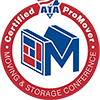
Here are a few helpful tips for choosing the right packaging for your belongings:
Dishware – All dishes could be packed in dish barrels which are specifically designed for the safekeeping of your fragile items. Plates, bowls and saucers should all be wrapped individually and serve as the bottom layer in the box. Smaller items such as figurines and other knick-knacks should be wrapped and make up the top layer. Other small kitchen appliances can also be packaged in these boxes.
Mirrors and Artwork – Pictures, paintings, mirrors, glass table tops and small pieces of marble should be properly wrapped and placed in the proper size mirror cartons. Be sure to measure before you buy!
Small Items – This includes books, liquor, tools, spices and heavy cookware. All of these items be placed in small book cartons. Heavy items should be packed in smaller boxes to ensure their safety and the structural integrity of the box.
Larger Items – Generally encompasses items that do not fit in medium and small boxes. Cookie sheets, pillows, lamps and games all fit nicely in large cartons.
Oversized Items – From comforters and pillows to baskets and large lamp shades, extra-large cartons are designed to protect loose, oversized items from damage.
Tall Items – Not just for suits, dresses and other hanging clothing, wardrobe boxes are suited for floor lamps and other tall, narrow items that may not fit in other containers.
Hanging Clothes – Having wardrobe bags for all of your clothes is unlikely. Wardrobe boxes are available to protect your high-value and fragile clothing from damage and wrinkling during your move.
Folded Clothes – Clothing that is already stored in dresser drawers may be kept there as long as the dresser’s weight isn’t too much. Be sure to remove all breakables and secure the drawers to avoid opening during the move, as this could result in both damage and injury. Extra clothing or heavy items like sweaters and jeans should be packed in suitcases or medium boxes.
Other tips for a better move:
Lift – Avoid filling boxes beyond 40 pounds, both for the structural integrity of the box and for the sake of the mover. Lift the box before taping it shut to ensure it’s not too difficult to handle.
Label – Label your boxes on both sides with their contents and which room the items belong in for a more efficient move-in process.
Tape – Tape boxes shut once they’re full, labeled and ready to move.
Shake It – Once a box is taped shut, give it a shake. If items are moving around, the box is not packed tight enough…the only thing rattling should be your silverware! Be sure to fill your boxes to the top and cushion with lots of paper.
When packing your home, have reasonable expectations about how many boxes you will need. It is best to survey your needs by room. Get started on your upcoming household move with the professional team at Preferred Moving & Storage! Call us today or fill out our online quote form to schedule your free, in-home estimate.
Tags
Subscribe to Preferred Moving & Storage's Blog



